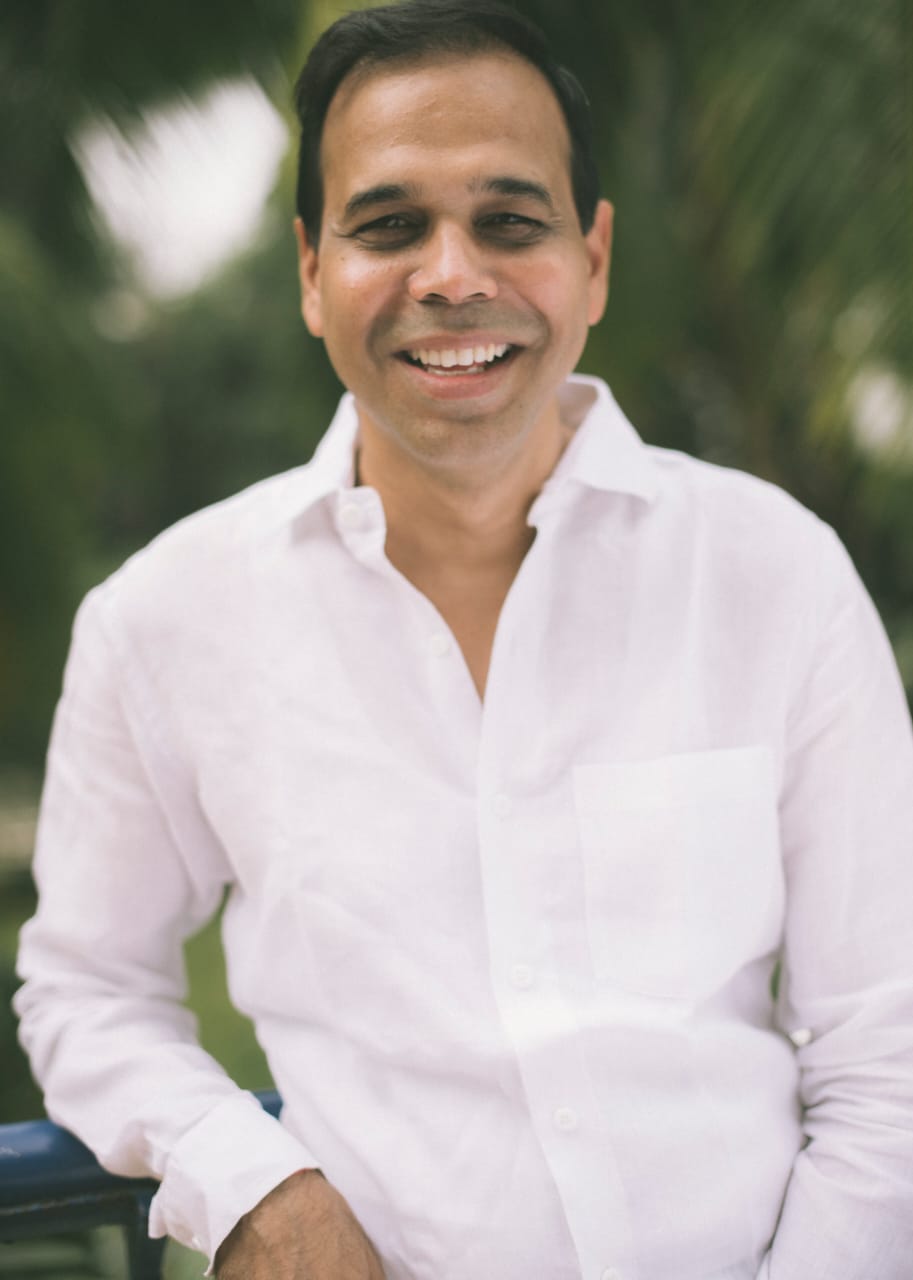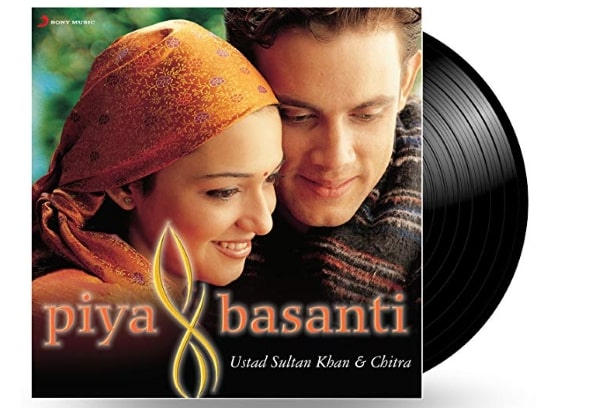‘Piya Basanti’, the non-film album completes twenty years of its release. The album, which featured the voices of Ustad Sultan Khan and K.S. Chithra, remains one of the most successful Indipop albums released in the country. Back in the day, it bagged the International Viewer’s Choice Award at the 2001 MTV Video Music Awards in the Hindi pop genre. On the eve of the album’s twentieth anniversary, composer Sandesh Shandilya recalls and narrates what went behind the creation of this iconic album.
It has been twenty years since ‘Piya Basanti’ released but the album sounds so fresh, almost as if it released recently. The compositions were deeply rooted in Indian classical music but you also used western instruments as a part of the orchestral setup. What was the thought behind the album?
We first cracked the concept and that led us towards giving the album its final shape. It was like a dot through which we drew a complete picture. The definition of love is very different for a teenager and an elderly person. An elderly person has experienced a lot of things and thinks deeply about love. Love could be a very different emotion for a teenager who has just experienced it for the first time. We thought how would the feelings of an elderly person and a teenager, when put together, would sound. We wanted the instruments to depict the emotions of both the age groups, so we used a mix of Indian and western instruments. I did not get to meet Pradeep Sarkar to discuss how the videos would come out but I was surprised to see that the videos he shot reflected the thoughts expressed in the audio tracks very accurately.
It was also the first time we got to see a sequel being made to a music video. ‘Chale Re’ took the narrative of ‘Piya Basanti’, the music video, ahead.
Yes, that is right. The credit for that goes to Pradeep Sarkar and the creative team behind the videos.
‘Piya Basanti’, the title track, was written by Khilesh Sharma, who also worked with you on films like ‘Road’ and ‘Gangaajal’.
Yes, it was his first song for any album or a film. He is a very gifted writer and is based in Uttar Pradesh. He has been away from the film industry for a long time but I hope he comes back sometime soon and writes songs again.
My favourite song in the album was ‘Koi Pyaar Se’. Can you take me through the process of creating that song?
It was a solo number sung by Khan sahab and was written by Prasant Vasl. The song was created very organically just like the rest of the songs in the album. The song has a wonderful melancholic feel to it. Khan sahab brought out the pathos in the song very well. I think the album turned out to be so special as it had Khan sahab and Chithra ji singing the songs. Khan sahab was my guru and it was an honour to have him sing my compositions. Chithra ji is one of my all-time favourite singers. I became very nervous when I realized I would be working with her. She was a legend and I was a big fan. When she came for the recording, I realized she was extremely humble. She never let me feel that she was such a big star.
There is an element of jazz music in some of the songs including ‘Koi Pyaar Se’. Your love for jazz reflects in many of your compositions like ‘Chhodo Na Mujhe’ (‘Rules Pyaar Ka Superhit Formula’), ‘Na Sahi’ (‘Socha Na Tha’) and ‘Main Ro Na Padun’ (‘Hum Phirr Milein Na Milein’), among others.
I would give complete credit to the musicians for the way the orchestration shaped up. I got to work with some of the finest musicians in the in the industry like Merlin D’Souza, Ankur Mukherjee, Anupam Chatterjee and Rakesh Chaurasia on this album. Niladri Kumar played the sitar pieces for the songs. Niladri is a very dear friend and he is a brilliant musician. He is one of those musicians I am a fan of. The album would not have been possible without these wonderful musicians. I am glad I could incorporate elements of jazz with whatever little knowledge I had of the genre at that time. I studied jazz more elaborately a couple of years later. I did not take any formal training in it but I picked up a lot of things from my friends.

Which was your favourite song from the album?
It is hard to pick a favourite (pause). One of my favourite songs was ‘Shaam Dhale’. There is a very interesting story behind this song. When I was studying engineering in Jammu, my neighbour was Mr. Yash Sharma. He was the chief announcer at the Jammu Radio station. He is a very famous writer of Dogri literature. Once I met him and told him I wish to become a music composer. One day, he gave me a couple of verses he had written and asked me if I could compose music on it. All of this happened in the year 1987. His lines remained in my diary for years. The song was finally recorded in the year 2000 for the album. I called up Yash ji and informed him that the lines he had written have finally found their way into a song. He was very happy and gave me his blessings. His daughter Seema Anil Sehgal is a very good classical singer. Another favourite from the album was ‘Surmayi Aankhen’ which was written by Rakesh Nirala.
There is an interesting story behind how you met Ustad Sultan Khan for the first time. You met him at a recording. When he looked at you, you felt a divine connection with him. A short while after that, you asked him whether you can assist him.
Yes. Khan sahab was composing the music for a film. I am not sure if that film ever released. I was there with Surender Sodhi ji, whom I was assisting. Surender ji was supposed to arrange the songs composed by Khan sahab. The relationship between a guru and a shishya is divine. I feel blessed to have got the opportunity to spend time with him and learn from him. I had learnt music at the Sriram Bharatiya Kalakendra in Delhi but music is something that you can keep learning throughout your life. The more you learn, the more you will discover its beauty. I kept on learning from Khan sahab till the time he was alive. Apart from learning music from him, I learnt how important it is for one to be honest to one’s craft.
Some songs in the album had a distinctive Pahari folk touch to them. Many of your film songs like ‘Yaara Rab’ (‘Socha Na Tha’), ‘Tum Pe’ (‘Uuf Kya Jadoo Mohabbat Hai…’), ‘Kuch Kareebi’ (‘Time Out’) and ‘Ae Waadi Shehzaadi’ (‘Shikara’) also have a trace of Pahari folk music in them. Does your love for mountains and Pahari folk music comes from the fact that you studied in Jammu?
No. I think my love for mountains traces back to my previous birth (laughs). I love mountains. Whenever I see mountains, I feel very inspired. Whenever I compose, I visualize mountains. I have not heard much Pahari folk music. I have studied classical music but I am not sure where this love for mountains and Pahari folk music comes from. I remember you mentioning this to me when we spoke for the first time a couple of years back. You are one of the very few people who have noticed this.
A sequel to this album called ‘Piya Basanti…Again’ released in 2012. It was initially titled ‘Sehra Sehra’, which happens to be the title of one of the songs from the album.
Yes, the album was recorded in 2002 and it released ten years later in 2012. Mehboob sahab wrote all the songs. The rest of the team was almost the same. I wish it had come out earlier and promoted better. It had some very good songs.

